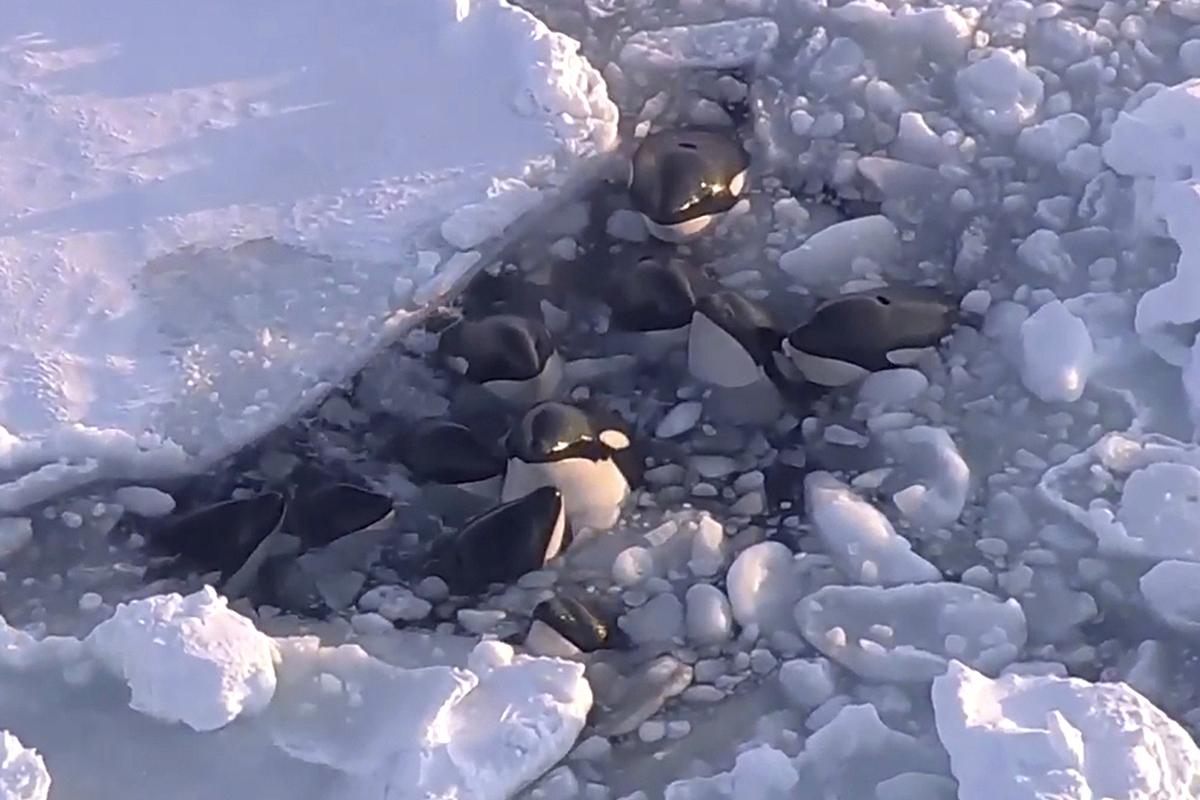“There were no more than 20 hours left”: killer whales trapped in ice were rescued by the whole world
[ad_1]

Thousands of concerned people from all over the world called to save 16 Red List killer whales that were trapped in ice in the Nemuro Strait between Hokkaido and Russian Kunashir. On the morning of February 7, observers from the Rausu City Hall who arrived at the scene did not find killer whales, Japanese media reported. The ice situation, fortunately, had changed; there were already areas of open water nearby. The killer whales were saved. We talked with marine biologists about how such an ice trap threatens cetaceans from the dolphin family.
“In that area in the Pacific waters there is a group of killer whales,” says Anton Chernetsky, a researcher at the laboratory of marine mammals at the Shirshov Institute of Oceanology. — Our scientists worked there. But it should be noted that such accumulations of ice do not often occur in the Nemuro Strait. This is still typical for more northern latitudes. In this case, apparently, broken ice was deposited by the storm wind, and at some point it froze together. And over a fairly large area.
A family group of killer whales numbering 16 individuals, including several babies, fell into an ice trap near the Japanese town of Rausu on the morning of February 6. Cetaceans from the dolphin family were blocked by drifting ice and could not independently reach open water.
— The difficulty was that the hole there was quite small, and there were 16 killer whales. They needed to support this hole in order to breathe.
— How long can killer whales hold their breath?
– For 10-15 minutes, perhaps 20 minutes. But this is under normal conditions, when diving. But they apparently did not have enough time to dive through a section of ice and get to open water. The ice shell there seemed to be several kilometers long, and maybe even more. We must also take into account the fact that the killer whales were there with their calves.
As the scientist says, all hope was that the wind would change direction, carry the ice away and new leads would form.
— A Russian vessel with reinforced ice class was ready to come to the aid of killer whales if they could come to an agreement with the Japanese. But the situation, fortunately, was resolved.
The hole where the killer whales were located was about a kilometer from the shore. When observers from the mayor’s office of the Japanese town of Rausu arrived at this place on the morning of February 7, the animals were no longer there. This is confirmed by photographer Yukari Aida, who was the first to discover animals trapped in ice.
The ice became loose, turned into slush, and areas of open water appeared. This is clearly visible in the video, which was taken from a helicopter. It was shown by local broadcaster Hokkaido Television Broadcasting.
But, as scientists say, the lives of the killer whales really hung in the balance. The cetaceans had about 20 hours to escape the trap. Then they could simply become exhausted due to the struggle for air. Or the wormwood could finally bind the ice.
The head of the Scientific and Environmental Dolphin Rescue Center “Delfa” Tatyana Beley recalls that in 2005, nine killer whales died, which were also stuck in the ice.
— This also happened in February in the area near Rausu. They tried to save the killer whales, but they did not survive. Then their bodies were discovered. In such cases, much depends on the thickness of the ice. Killer whales have to surface, push, push away the ice. A lot of effort is spent on this. At the same time, animals need to breathe more often. Killer whales, like all cetaceans, breathe using a blowhole, that is, in the process of evolution, their nose, so to speak, “moved” to the top of their head. To enter, they must float to the surface.
The killer whales were sandwiched between drifting ice close together.
“This is serious stress for them.” Killer whales cannot hunt at this time. We must understand that cetaceans get water from food. If they don’t eat, it means they don’t drink, and this risks dehydration. Since they were in a confined space and were constrained in their movements, this could lead to hypothermia, the death of the animals, or the development of infectious diseases in them. I really hope they actually managed to get away.
Anton Chernetsky, in turn, says that beluga whales often get stuck in ice holes.
– Polar bears use this to hunt them. As for killer whales, they are capable of breaking through ice and pushing away ice floes with their muzzles. “This is one of their methods of hunting seals that crawl on the ice. Killer whales are one of the most intelligent animals adapted to harsh conditions.
[ad_2]
Source link








